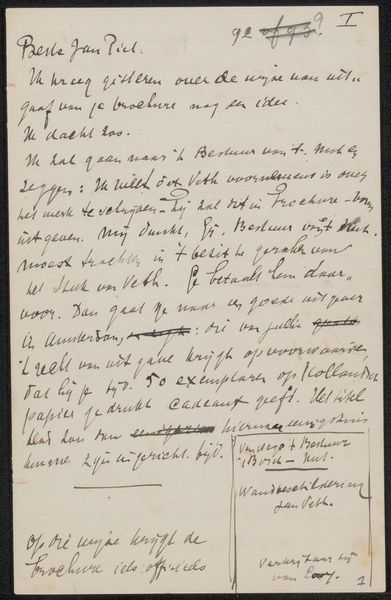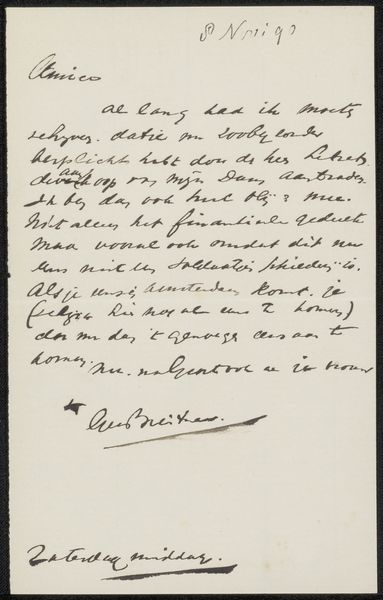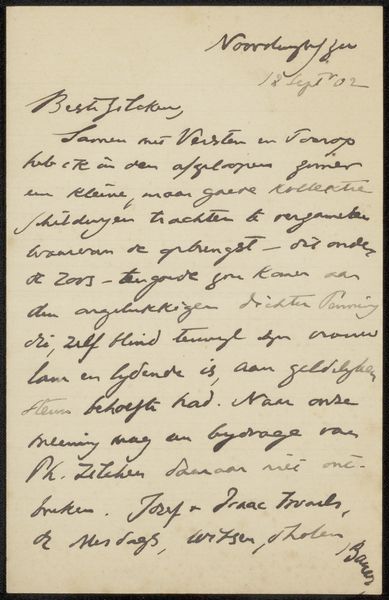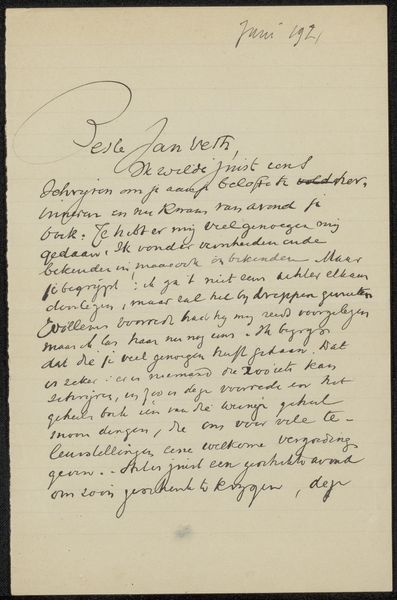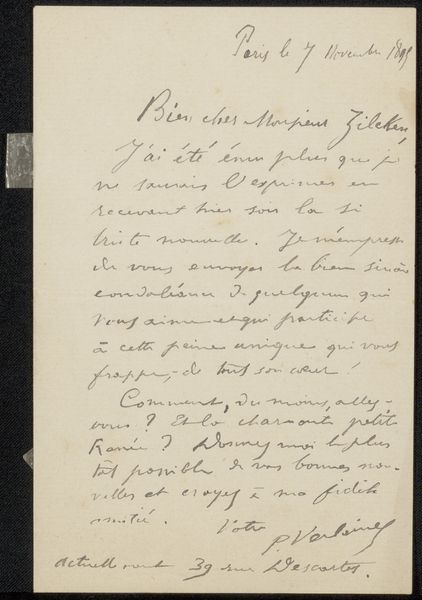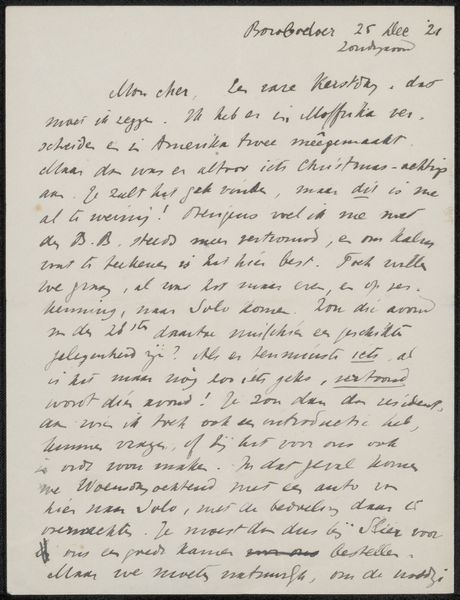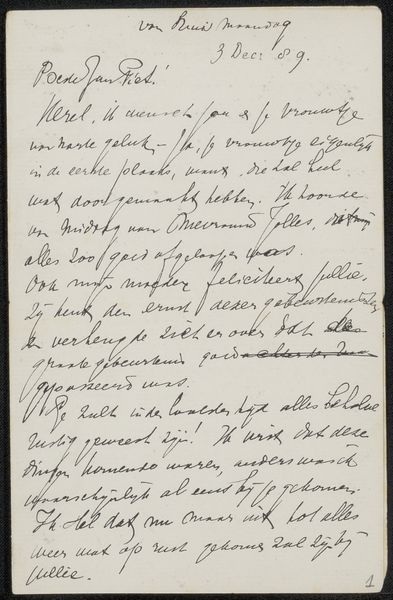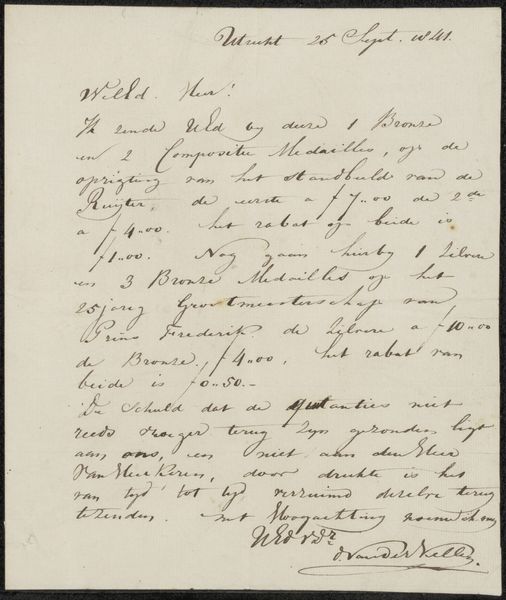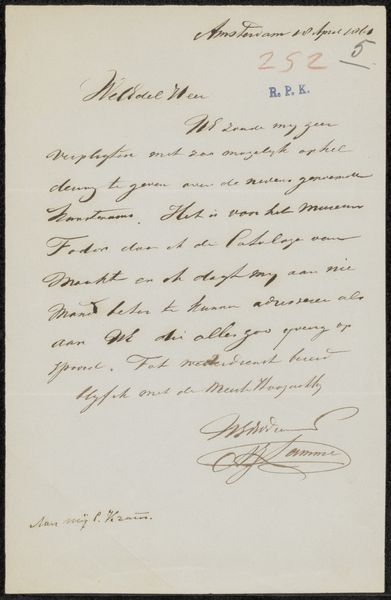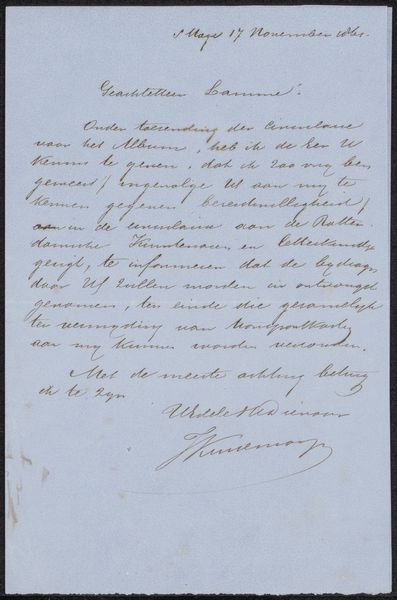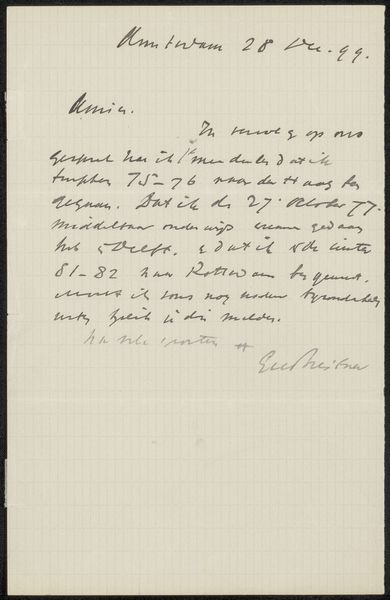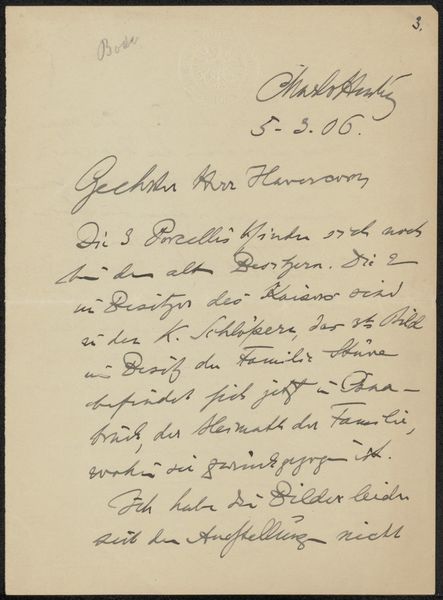
drawing, paper, ink, pen
#
drawing
#
hand written
#
script typography
#
hand-lettering
#
hand drawn type
#
hand lettering
#
paper
#
ink
#
hand-drawn typeface
#
pen-ink sketch
#
pen work
#
sketchbook drawing
#
pen
#
small lettering
Copyright: Rijks Museum: Open Domain
Curator: Before us is "Brief aan mevrouw Reiss," a letter crafted possibly in 1877 by Eugène Verboeckhoven, employing pen and ink on paper. What is your initial reaction to this handwritten document? Editor: Immediately, I sense a blend of formality and intimacy. The script itself, though elegant, appears somewhat hurried, almost secretive. It reminds me how written correspondence functioned as both a social connector and a barrier, a private space amidst public life. Curator: Observe the meticulous details in Verboeckhoven's penmanship, the controlled strokes that create a beautiful composition. The ascenders and descenders form rhythmic patterns, enhancing its aesthetic appeal beyond mere communication. Consider also the strategic placement of address and salutation, which function almost as framing elements within the pictorial space. Editor: But what of the receiver, mevrouw Reiss? Letters are rarely solitary. Who was she? What power dynamics are at play here, if any, based on Verboeckhoven's tone and societal standings? Epistolary exchanges can be crucial indicators of historical gender dynamics and class relationships. Curator: That is a fair point. One could even analyse the materiality of the letter. The paper quality and ink type provide insights into the socio-economic context, the means of production, and the availability of such resources in 19th-century Belgium. We see evidence of handwriting practices, calligraphic traditions, even societal preferences for aesthetics. Editor: True, and that opens the question: What did it *mean* to send and receive such a letter in this time period? To fully appreciate this drawing, we must acknowledge that communication then carried far more weight. It created connections while solidifying social hierarchies. And perhaps also solidified male dominance. Curator: Indeed, our dialogue emphasizes the vital, often contrasting layers of interpreting art, from its inherent form to its broader context. Editor: Right. This piece pushes me to think beyond neat aesthetic categories and ask: What are the social relationships made manifest here through ink, paper, and words?
Comments
No comments
Be the first to comment and join the conversation on the ultimate creative platform.
